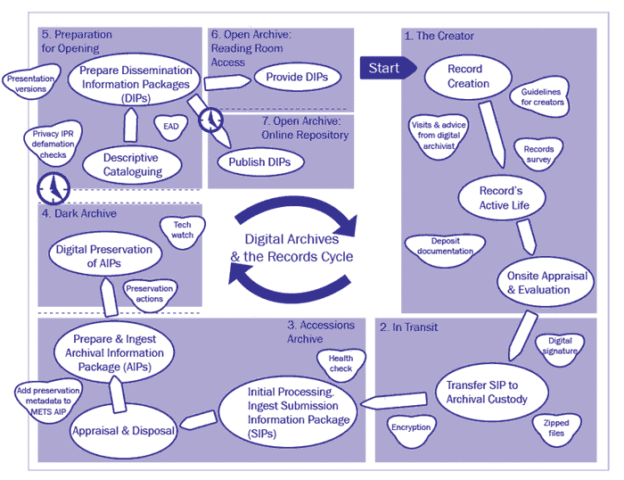-
Creative Difference Between Digital Humanists and Digital Archivists

Kirschenbaum in “The .txtual Condition: Digital Humanities, Born-Digital Archives, and the Future Literary” makes a series of arguments that simultaneously challenges and accepts a rigid ontology of archives, as codified by the Open Archival Information System. Based on their series of suggestions for collaboration, they argue that there is a clear delineation between…
-
The Passing of Aboriginal Knowledge Through Databases

The article “Computer Databases and Aboriginal Knowledge” by Michael Christie discusses the relationship between Aboriginal knowledge and databases. The aboriginal elders wanted to put their history and traditions in an electronic database so that their youth would be interested in learning about their culture. The Aborginal people used databases to catagorize their information for easy…
-
Databases and Digital Archives

Archivist Kate Theimer, in her essay “Archives in Context and as Context,” raises an interesting point about the relationship between a database and a digital archive. She argues that the term “archive” is a double entendre. Information technologists use “archive” to describe back up data; digital humanists use “archive” to describe collections of data. But…
-
Indigenous Knowledge Databases

In Michael Cristie’s Computer Databases and Aboriginal Knowledge, found at http://www.cdu.edu.au/centres/ik/pdf/CompDatAbKnow.pdf, he discusses the possibility of creating a database of the knowledge of the elders in order to carry on this knowledge in an age where many of the Aboriginal youth are more interested in technology than carrying on tradition. He discusses the complexity of…
-
TEI Headers and their Meaning

The TEI header has five primary parts: the file description, encoding description, text profile, container element, and revision history. The file description contains a file bibliographical description of the file, and the encoding description entails details about the transcription, analysis and encoding of the file. The text profile classifies and gives context to the text.…
-
Not Reading the 19th-Century Novel, and the DH/PH Relationship

This past semester, my course tackled the traditional DH assignment – “(Not) Reading a Nineteenth-Century Novel.” In a class focused on how DH fits within graduate study of English departments, the premise of the assignment made a lot of sense. These are literary scholars looking to understand how these tools fit within their research goals.…
-
TEI Headers and Encoding

After encoding the title page and the first 12 lines of Helen Maria Williams’ Poem on the Bill Lately Passed for Regulating the Slave Trade into an XML (eXtensible Markup Language) document, I recognized the importance of the TEI (Text Encoding Initiative) header. The TEI Header, in general, has four children – the first of which…
-
Willams Poem Transcribed Using TEI

Practicum #3 Prompt What are the main parts of the TEI Header, in general? (This guide will help.) What do these parts, in your TEI file, tell us about the digital object you encoded (Williams’ poem)? What is the relationship between these two parts of the file, the Header and the Body? What do you…
-
UX1 Francesca Annunziata GEMA

Welcome to America! The famous American dream came true. After a long flight, i arrived in Philadelphia. It was exciting to see a city in the American style with many skyscrapers and many lights. One of the most beautiful things of USA are the americans because are the most hospitable people I’ve ever met. When…
-
Digital Rhetoric Collaborative Book Prize
The deadline for the UMPress/Sweetland Publication Prize in Digital Rhetoric is fast approaching: February 1st. We encourage submissions of completed or very near completion book-length projects that display critical and rigorous engagement in the field of digital rhetoric. For information about submissions, please visit the Call for Submissions: http://www.digitalrhetoriccollaborative.org/book-prize/